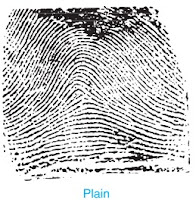What is Weather Radar and How Does it Works?
Radar is developed in World War II to detect enemy aircraft. Over a while, they noticed that they were catching signals from raindrops, hailstones, and snowflakes. After the end of the war, these radars were used for weather forecasting. From 1948 weather radar was installed on aircraft to help the pilots detect bad weather.
A weather radar is nothing but an antenna that rotates and scans the sky. It transmits a directional, narrow beam of microwaves having a wavelength in the range of 1-10 centimeters.
These wavelengths are about 10 times the size of the raindrops, hailstones, and snowflakes. So, these particles scatter the microwaves back and a return signal is picked by the respective radar.
From the whole process, mainly five things are measured:
1. The time taken for the microwave pulse to travel to and from the scattering object gives the distance.
2. The Doppler shift of the return microwave pulse gives the direction and the velocity in which the cloud or body is moving.
3. Changes in the Doppler signal can show the turbulence of the raindrops or snowflakes and thus predicts whether thunderstorms could develop.
4. The strength of the return microwave pulse gives the amount of rain present in a cloud.
5. The shape of the return microwave pulse can help to distinguish between rain, snow, and hail.
To get a proper 3-D moving weather picture along with cloud heights requires an interconnected series of weather radars plotted over a land.
Weather Radar and It's Working.
A weather radar is nothing but an antenna that rotates and scans the sky. It transmits a directional, narrow beam of microwaves having a wavelength in the range of 1-10 centimeters.
These wavelengths are about 10 times the size of the raindrops, hailstones, and snowflakes. So, these particles scatter the microwaves back and a return signal is picked by the respective radar.
What does a weather radar measure?
From the whole process, mainly five things are measured:
1. The time taken for the microwave pulse to travel to and from the scattering object gives the distance.
2. The Doppler shift of the return microwave pulse gives the direction and the velocity in which the cloud or body is moving.
3. Changes in the Doppler signal can show the turbulence of the raindrops or snowflakes and thus predicts whether thunderstorms could develop.
4. The strength of the return microwave pulse gives the amount of rain present in a cloud.
5. The shape of the return microwave pulse can help to distinguish between rain, snow, and hail.
Bonus Point
To get a proper 3-D moving weather picture along with cloud heights requires an interconnected series of weather radars plotted over a land.



